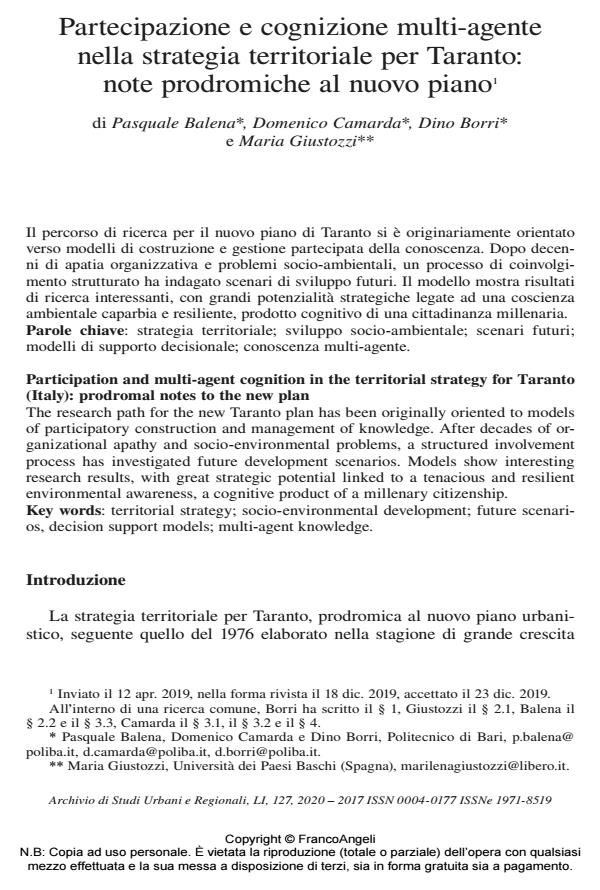Participation and multi-agent cognition in the territorial strategy for Taranto (Italy): prodromal notes to the new plan
Journal title ARCHIVIO DI STUDI URBANI E REGIONALI
Author/s Pasquale Balena, Domenico Camarda, Dino Borri, Maria Giustozzi
Publishing Year 2020 Issue 2020/127
Language Italian Pages 24 P. 148-171 File size 234 KB
DOI 10.3280/ASUR2020-127007
DOI is like a bar code for intellectual property: to have more infomation
click here
Below, you can see the article first page
If you want to buy this article in PDF format, you can do it, following the instructions to buy download credits

FrancoAngeli is member of Publishers International Linking Association, Inc (PILA), a not-for-profit association which run the CrossRef service enabling links to and from online scholarly content.
The research path for the new Taranto plan has been originally oriented to models of participatory construction and management of knowledge. After decades of organizational apathy and socio-environmental problems, a structured involvement process has investigated future development scenarios. Models show interesting research results, with great strategic potential linked to a tenacious and resilient environmental awareness, a cognitive product of a millenary citizenship.
Keywords: Territorial strategy; socio-environmental development; future scenarios, decision support models; multi-agent knowledge.
Pasquale Balena, Domenico Camarda, Dino Borri, Maria Giustozzi, Partecipazione e cognizione multi-agente nella strategia territoriale per Taranto: note prodromiche al nuovo piano in "ARCHIVIO DI STUDI URBANI E REGIONALI" 127/2020, pp 148-171, DOI: 10.3280/ASUR2020-127007